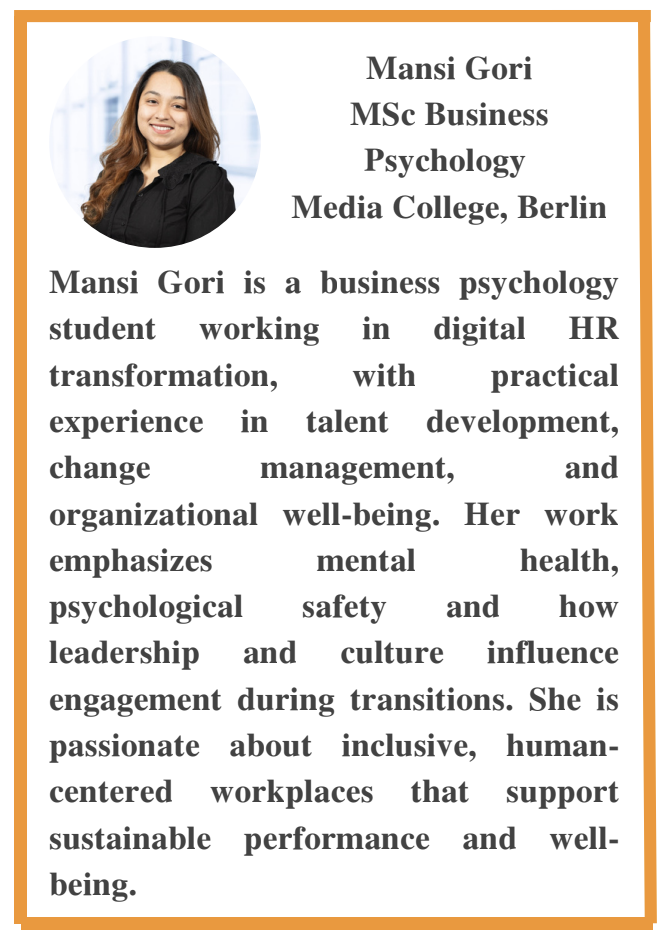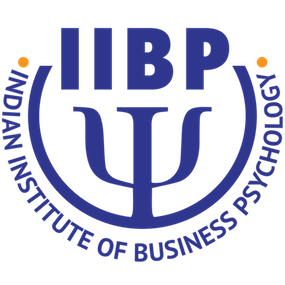As people try to keep up with growing work demands, stress, burnout, and anxiety are becoming more widespread. “In 2019, the World Health Organization defined burnout as a syndrome caused by chronic workplace stress that has not been successfully managed, characterized by:
1. Energy depletion or exhaustion
2. Mental distance, negativism, or cynicism toward one’s job
3. Reduced professional efficacy”
(Burn-out an “occupational phenomenon”: International Classification of Diseases. 2019 May 28., 2019)
“A Deloitte survey reveals that mental health disorders in India account for nearly 15% of the global mental health burden” (Deloitte, 2022). Despite numerous contributing factors, a persistent lack of awareness and stigma remains a key barrier. The WHO estimates that between 2012 and 2030, India may face a financial loss of up to USD 1.03 trillion due to mental health issues (Burn-out an “occupational phenomenon”: International Classification of Diseases. 2019 May 28., 2019). To change course, India must address the deeper systemic causes of poor mental health at work.
The Burnout Economy: What’s Driving it?
India’s rapid economic pace, paired with a strong hustle culture, has led to an environment where overworking is normalized. Long hours, constant connectivity, and blurred work-life boundaries are major contributors to rising burnout. The unwillingness to seek help due to societal shame exacerbates the situation.
“Gallup reports that nearly half of Indian employees are job hunting, with about one third experiencing stress on a daily basis” (Gallup, 2025). Common workplace well being efforts like yoga days or motivational messages often address symptoms but overlook the deeper systemic pressures causing burnout. Despite data clearly showing that overwork is harmful, influential business leaders continue to promote working for excessive hours.
The Cost of Burnout
Burnout is not just psychological; it also poses serious physical risks. It can weaken the immune system and contribute to cardiovascular problems, poor sleep, hormonal imbalances, and chronic fatigue. Neurologists warn that chronic overwork can even impact brain function.
On a social level, burnout strains relationships and reduces quality time with family and friends. In the workplace, it leads to presenteeism and disengagement. Many companies fail to link these outcomes to mental health due to the lack of open dialogue. Taking leave for rest is often discouraged, with time off accepted mainly for physical illness or emergencies.
“Poor mental health is estimated to cost Indian employers over ₹1.1 lakh crore annually, according to Deloitte” (Deloitte, 2022). High burnout also leads to high attrition, increasing recruitment and training costs.
Shifting the Narrative.
The problem is no longer on an individual level – it reflects systemic red flag. Organizations must prioritize structural changes that promote psychological safety, where employees feel secure in speaking up without fear of negative consequences (Edmondson). To truly improve well-being, organizations need to move beyond surface level wellness programs and tackle the root causes of stress.
Strategies that Work
Creating a culture that is supportive and open starts with increasing awareness. Organizations should conduct mental health sensitization trainings, introduce compassionate leave policies for mental recovery, and train managers to identify and reduce stressors like overwork and unrealistic expectations.
- Right to Disconnect Policies (Infosys India) – Implementing quiet hours and discouraging post work time emails to help establish boundaries.
- Micro Sabbaticals (Deloitte India) – Annual recharge weeks and 4 day work week to allow rest and recovery
- Workload Monitoring Algorithm (Google) – Tools that access workload and flag burnout risks.
- On site Counselling (TCS & Wipro) – Immediate access to professional help. • 14 hour health week (Plum, 2025) – Encouraging employees to spend minimum of 2 hours every week investing in their health.
A Collective Call to Action.
“According to a recent Plum report, only one in ten Indian employees are thriving at work (Plum, 2025)“. With over 600 million Indians between 18 and 35, this statistic is alarming for the world’s youngest workforce (Plum, 2025). Mental health solutions cannot be one large umbrella that fits all. The workforce is diverse including men, women, LGBTQ+ individuals, young professionals, older adults, neurodivergent, and differently abled people.
Each group faces unique challenges: stigma against the LGBTQ+ community, unaddressed reproductive and menstrual health needs for women, and lack of support for neurodivergent and differently abled individuals. Addressing burnout and mental health must therefore be inclusive, proactive, and tailored — not reactive or performative.
References
- Burn-out an “occupational phenomenon”: International Classification of Diseases. 2019 May 28. (2019). World Health Organization.
- Deloitte. (2022). Mental health and wellbeing in the workplace.
- Edmondson, A. (n.d.). The Fearless Organization: Creating Psychological Safety in the Workplace. 2019.
- Gallup. (2025). State of the Global Workplace: 2025 Report. .
- Plum. (2025). Employee Health Report.
About the Author


